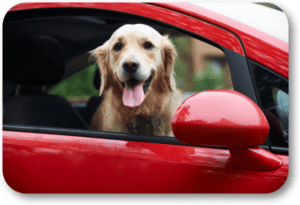I was in Decatur about a week ago working with a new Home Dog Training client and his 2 year-old Schipperke by the name of Shelby. I haven’t worked with Schipperkes for several years and was excited to have the opportunity to work with this great breed again. Being only 2 years old, Shelby was still “a teenager” and full of vim and vigor. The biggest issue my clients had with Shelby was that he just would never listen to them.

This perceived lack of respect greatly angered my client. His anger was normally “animated”, and that made Shelby think that my client wanted to play with him. This miscommunication between my client and Shelby escalated the situation and made matters worse.
The first thing I did was to teach my client the behavior that Shelby was expecting and, lo and behold, Shelby began to settle down and take the proper queues from my client. Needless to say, he was amazed and completely surprised at the simplicity of the solution.
From there, we switched gears and focused on obedience exercises as well as bolstering behavioral rules. As we were finishing up, my client had one more question. It seemed that Shelby had no problem in getting in the car and was fine with traveling. My client just wanted to make sure that he was keeping Shelby safe while they were in the car. He wondered if I had any suggestions I could offer.
This is one of my “favorite questions” because it focuses on safety and a client’s desire to be a great dog owner. I first pointed out that most cars aren’t naturally designed to be “safe dog transporters”. Also, many of the gadgets and gizmos that you can get at the pet stores and over the internet don’t necessarily keep your dog safe and comfortable. It really gets down to some simple “rules of the road” for your dog. Here is my list:
DON’T…
- use a “doggie car seat” that positions your dog above the heads of you and the other people traveling with you in the car. “Height is dominance” and by placing your dog above everyone else, it tells him that he is in charge. This often causes annoying barking as your dog tries to “take charge” of the people in the cars around you and on the sidewalks.
- allow your dog to freely roam around the car. He could easily be thrown forward if you have to quickly stop or distract you while driving.
- allow your dog to stick his head all the way out of the window. (I know that you see everyone else on the road allow their dogs to do this, just don’t.) If you are traveling sixty, seventy, or eighty (Some of you are “lead foots”), the extreme wind could damage his neck. Also, a sudden jolt could cause your dog to “bang on the side of the window opening”.
- leave your dog unattended in the car. If you are gone for a long time, the car could easily heat up or freeze up. You also never know what distractions around the car could frighten or highly agitate your dog.
- allow your dog to be on your lap when you are driving. You also don’t want him sitting in the front passenger seat. Your car airbags are intended for people and not dogs. If something happens and your airbags deploy, they will deploy to stop the forward motion of a human and not a (smaller) dog. The extreme force the air bags use in deployment will often hurt your dog.
DO…
- place your dog in a restrained situation either on the rear seat or rear floor. We often suggest “doggie seat belts” that attach to your seat belt and then to your dog’s harness. If your dog can fit in a crate and your car is designed to accommodate a crate that is safely tied down, that is a great alternative as well. This makes sure the dog is safe in the event of an accident. It also keeps him at a proper, non-dominant level in the car.
- make sure you have brought along some toys or other “goodies” for your dog. Just like our kids, these things keep him busy and properly focused. Again, just like our kids, boredom can lead to unacceptable behavior on long car rides.
- pull over and take a lot of breaks if you are going for a long car ride. Remember that your dog still needs to “stretch his legs” and probably has to go potty. On top of that, you probably need a break from driving as well.
- try and take your dog with you when you have to stop to run a quick errand along the way. This breaks up the monotony and provides your dog with a new, bonding experience.
As with most things, the best answers are the straightforward ones that you can easily implement. My client loved the suggestions and couldn’t wait to try them out on the next long car ride he and Shelby would take.
Please call or text us at (770) 718-7704 if you need any dog training help. You can also email us at [email protected]. We are blessed to have been your local dog training experts for over eighteen years. We have trained over 6,000 wonderful dogs and excellent families and are ready to help you.

Follow Us!